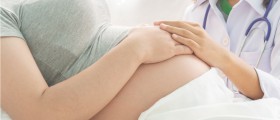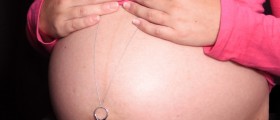
It is estimated that every year thousands of women develop pregnancy induced hypertension. This medical condition is known under the names toxemia or preeclampsia. Around 7 out of every 100 pregnant women will develop toxemia of a certain degree. While mild toxemia only requires monitoring and is almost never associated with some serious problems, severe toxemia is a serious and sometimes even life-threatening condition.
Why Toxemia is Dangerous
It is essential to emphasize that if toxemia is left untreated, it can easily progress into eclampsia and even more complex complication known as HEELP syndrome.
Women suffering from toxemia generally have blood pressure over 140/90 mm Hg. There is also the presence of proteins in urine and hyper-reflexia. The condition typically occurs after 20th week of pregnancy and is more frequent in women who are pregnant for the first time.
Some women are more susceptible to toxemia. For instance, the condition occurs more in women who conceive after the age of 40, those with eating disorders as well as women carrying multiple fetuses.
Pregnancy Toxemia Symptoms and Signs
Pregnant women suffering from toxemia have persistent high blood pressure, proteins in urine and they are prone to fluid retention. Excess of fluid subsequently leads to swelling of hands, ankles and face. Due to increased blood pressure they also suffer from frequent headaches. Hypertension is also blamed for blurred vision, nausea and vomiting.
Apart from the mentioned there are several more symptoms these women may complain about which are not characteristic for high blood pressure and are also reported in other medical conditions. Some of them are fever, hyper-reflexia, severe abdominal pain, diarrhea, irregular bowel movement etc.
Certain number of women additionally complains about myalgia (muscle pain), disorientation or hallucinations and shortness of breath. Pregnancy Toxemia Treatment
It is possible to diagnose the condition prior it causes a great damage to both, the mother and the baby. Firstly, all pregnant women undergo regular blood and urine test and their blood pressure is measured during every physical exam.
If the condition is diagnosed (confirmed) and is mild, it can be easily brought under control with plenty of rest and an adequate dietary changes. Food sources of protein (e.g. red meat, baked beans, lentils etc.) should be cut down. The woman is supposed to eat more fruits and vegetables and include a lot of soup and salads. Intake of sodium should also be reduced.
More complex cases require hospitalization and close monitoring as well as certain medications. The goal is to help a pregnant woman give birth to a full-term baby and prevent potential complications associated with high blood pressure.

















Your thoughts on this
Loading...